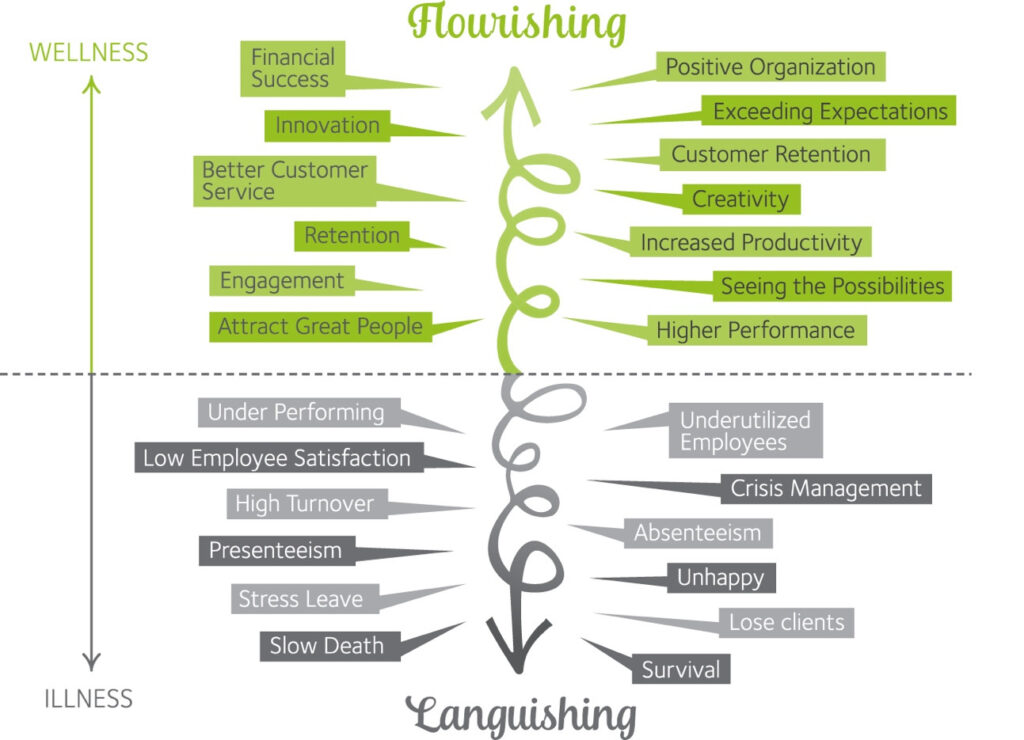
03 May Up the Water Spout Again: 8 Positive Ways to Flourish
Photo by henor teneqja on Unsplash.
A SPIDER SAID IT BEST…
Once upon a time, in a positively beautiful book written by E.B. White, there lived a little spider whose name was … Charlotte. Our heroine was small and grey, courageous and kind, gracious and extremely hard-working! She provides incredible comfort to a frightened pig, spins four amazing webs, and ultimately saves Wilbur’s life! Charlotte is busy, invested and has a lot on her plate! And after all her hard work, Charlotte announces, “I don’t feel good at all. I think I’m languishing, to tell you the truth.”
In other words, slowing down. Less energy. Not a lot of motivation. Blah.
Does this sound familiar?
In his recent article, There’s a Name for the Blah You’re Feeling: It’s Called Languishing, Adam Grant describes languishing as, “a sense of stagnation and emptiness. It feels as if you’re muddling through your days.”
Languishing is a state many of us currently find ourselves in; sort of a middle ground on a spectrum between flourishing and feeling depressed. The “Meh” state; not really an ideal place to be, but since we’re generally okay, we perhaps feel there’s not a whole lot we need to be doing to address it.
Given what we have collectively been through over this past year, this perpetual state (which Grant also says might be, “the dominant emotion of 2021”) really isn’t all that surprising. I know for myself, when the first lockdown started back in March of 2020, I was grateful for the forced slow-down. I took time to enjoy spring, read, cook, meditate, and set up a backyard gym. I wrote about the gratitude I had for this strange new reality, while still recognizing the sadness and the overwhelm in it.
But who knew it would last so long? And so, as the pandemic continues, while I can still find a lot of things to be grateful for, it is the “not knowing when this all ends” that creates the “blah” for me.
This week it is Mental Health Week in Canada. Before the pandemic began, I noticed there was already a big shift in organizations to address mental health in the workplace, with some organizations beginning to address and use the term mental wellness! Mental wellness is “…not about always being happy. It’s about being able to manage well in your daily life–-in good and bad times” (Fraser Health). Our mental wellness is influenced by a whole host of things, from our genetics, to diet, exercise, and various life experiences.
This week seemed like a perfect time to talk about how to support yourself and your team during these very challenging times.
WORK HAS CHANGED, FOR EVERYONE
Your work, like my work, has probably shifted drastically during the pandemic. Perhaps you went from working in an office with boisterous, friendly coworkers you love, to finding yourself at home, still working full-time, and possibly balancing child-care and homeschooling, too. That’s a big change!
Zoom fatigue has become a real concern for teams and organizations trying to connect and run a “business as usual.” Working from a screen for most of your day and not regularly seeing people is an enormous, and potentially very stressful transition.
And finally, while some people are enjoying the “extra time” they may have acquired while working from home, others really struggle with the lack of separation between their home-life and work-life (although, how wonderful are these creative ideas for shutting down after your work day?)
According to a report by Statistics Canada, 32 per cent of Canadian employees between the ages of 15 and 69 worked a majority of their hours from home at the beginning of 2021. In 2016, only 4% did that.
So, what we are seeing a lot of is people who are continuing to work, but also perhaps not feeling really great. They are just “Meh.”
The big question is: as leaders, how can we best support these feelings on our teams, but also move our way back to flourishing?
PERSONAL, TEAM & ORGANIZATIONAL FLOURISHING
In positive psychology, flourishing is defined as living “within an optimal range of human functioning, one that connotes goodness, generativity, growth and resilience.” (Fredrickson, B. and Losada, M, 2005, 60). In the workplace, the success of an organization largely depends on having teams that are flourishing … not languishing! That requires some real thought as to how to create team cultures where people can flourish and contribute their best. A team culture where employees feel psychologically safe to speak truth to power is vital, as is ensuring that team members are supporting each other, know that management has their back, and that the support and tools are available to them to take care of their own mental wellness.
This diagram from my book A Better Place To Work: Daily Practices That Transform Culture demonstrates what occurs in organizations when people flourish versus languish.

© 2016 Well-Advised Consulting Inc.
Languishing is the absence of well-being, where we become unmotivated, disengaged and unhappy. We definitely are not able to contribute our best in this capacity, and as Grant reports, we are three times more likely to reduce our work output. Research is also showing that this state of languishing may lead to depression or PTSD.
As the diagram suggests, when people are flourishing, we see more creativity, innovation, engagement, retention and performance. Flourishing is not arrived at through a few programs and lunch n’ learns, but rather through shifting our daily practices. These evidence-based practices can be developed by anyone to start an upward spiral in their own life, their teams or throughout their entire organization.
If you personally feel like you’ve been a little on the languishing side of things, or feel that your team might benefit from a shift in their daily Zoom meetings, have a look at these suggestions, and try a few:
PERSONAL PRACTICES TO FLOURISH
Shift Yourself, First. Ask yourself these questions: What changes can I make personally to embody the culture I want to see at work? What can I do to show up as the leader or team mate I need to be?
- Make sleep a priority. As work-life and home-life intermingle more than ever, it can be easy to work too long and then stay up too late. After all, for many of us, there is no longer a need to get up early for a commute or a flight. But setting some boundaries for yourself, like stopping work at a certain time each day, or heading to bed a half hour earlier makes a difference in getting that 7-9 hours of sleep that the average adult needs each night.
- Find the thing that gives you “flow.” Is it starting your day with a run, a stretch, some yoga, a meditation, a great cup of coffee and your journal? What can you do as a ritual to start into your work-day? And what are the practices or rituals you can adopt to keep that flow going? In my book, I talk about “breaking for energy” (forcing yourself to take a break before your energy drops) and “email intelligence” (setting specific times for a quick check of email), and then avoiding the perpetual checking (which on average is every 6.5 minutes for people with smart phones!), so that you can dig deep into those projects.
- Practice gratitude. There is nothing that helps us to flourish more than increasing our positive emotion. And one of the easiest practices to increase positivity over time is to sit down each day and physically write down three or more things that you are grateful for. You will not likely notice a difference immediately (except that it feels good to do it) but over time this practice changes your brain chemistry. You start looking for the positives more often. Your creativity soars. You become more engaged. Give it a try!
TEAM PRACTICES TO FLOURISH
To support flourishing in your team here are some effective practices you can start doing right now:
- Bring some FUN to your Zoom Meetings. What are you doing to create a fun factor for your team?Here are some ways to instill fun at the beginning of an online meeting:
- Create a theme. Ideas: wear a jersey from your favourite sports team; Toque Tuesday; Been There, Done That Day (wear something representing something you’ve done). Take a few minutes at the beginning of the meeting for each person to share why they showed up as they did.
- Use the breakout rooms! Create a contest and pair people up in breakouts to see who can come up with the best idea for your latest challenge (reaching new clients, giving great service, improving team work, etc.)
- Challenge people to show up with the wackiest Zoom background!
- Play an online game together (20 Questions? Trivia? Scavenger Hunt?)
- Start with a joke or a funny story. Or, share a short TedX talk that is funny or inspiring.
- Start with a win! Each person share something they succeeded at this week.
- Learn how to do an effective team debrief. Teams that do this well are close to 40% more productive than those who don’t. This practice literally only takes 5 minutes at the end of your meeting. Take this time to debrief with your team how the meeting went. Was it positive? Did everyone have a chance to speak? Did you move your goals forward?
- For more ideas on creating positive teams, you can read: “Expert Advice On Creating A Positive People Culture.”
ORGANIZATIONAL PRACTICES TO FLOURISH
- Set clear guidelines around remote work. Studies and interviews are showing that there is a deterioration in work-life balance, which is causing a lot of stress. Do your employees know what the expectations are around working from home? Hours? Breaks?
- Reduce multiple demands where possible. As Grant explains, the pandemic has been a big loss to many. Your employees need wins. Focus on one, or just a few manageable goals at a time. Experience the wins of accomplishing these goals and then move on to others. Multitasking never really did work, and now, more than ever, we need to abolish it, focus, and win!
Last year, I read an article that really resonated with me, about our ability function in high-stress situations for prolonged periods of time. We’re understandably not very good at it.
So, if you are languishing, you’re not alone! But, things are a little brighter on the FLOURISHING side of the spectrum, so use these practices to inch your way back up the upward spiral!
Even better – just think of yourself as that super resilient itsy-bitsy spider that keeps climbing back up the water spout, each and every time it rains. The sun WILL come out again.
Follow this blog for more ideas on creating your better place to work.
How’s your resilience these days? Book Deborah for a workshop with your team on The 3R’s For Teams During COVID-19: Resilience, Reinvention & Reflexivity.
Need something that is self-directed? Explore our new 10-module Leading A Better Place To Work course. Do it independently, or register your whole team and work through it together.
ABOUT DEBORAH CONNORS AND WELL-ADVISED CONSULTING
A captivating speaker, storyteller, author and workplace coach, Deb researches the latest breakthroughs in organizational health around the globe. She is the founder of The Better Workplace Conference, a national conference in Canada that she led for 17 years. She teaches leaders how to create great cultures.

